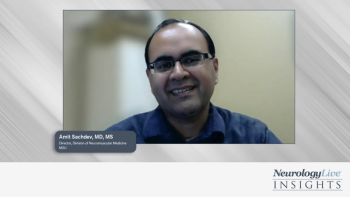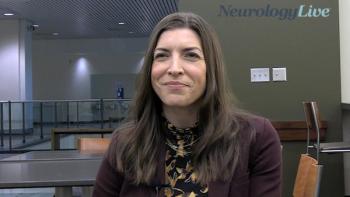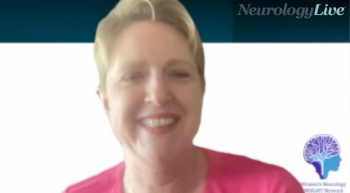
Therapeutic Potential and Early Promise Behind Stem Cell Therapy UX-DA001 in Parkinson Disease
Key Takeaways
- UX-DA001, an iPSC-derived cell therapy, showed significant motor improvement and increased dopamine transporter uptake in Parkinson's disease, indicating potential neuron regeneration.
- The therapy avoids immunosuppression by using patient-derived cells, reducing risks for older patients with comorbidities.
Liche Zhou, MD, of the department of neurology at Jiang University School of Medicine, provided commentary on new phase 1 data on an iPSC-targeted cell therapy presented at the 2025 MDS Congress.
At the
Cell therapies for PD represent a shift in treatment from purely a symptomatic management to neuron replacement/regeneration and possibly disease modification. There’s also the possibility for cell therapy to be integrated with other neuroprotective therapies, gene therapy, immunomodulation, and rehabilitation to maximize outcomes.
At the 3-month follow-up, treatment with UX-DA001 led to an improvement of 21 points in the OFF stage (47.7%) and by 8 points in the ON state (42.1%), as measured by the MDS Unified Parkinson’s Disease Rating Scale (MDS-UPDRS) Part III scores. To better understand the full significance of the presented data, NeurologyLive® sat down with Liche Zhou, MD, a member of the department of neurology at Jiang University School of Medicine, in China.
During the interview, Zhou discussed the trial’s design, early observations from imaging and motor assessments, and how this pioneering approach may inform the future of autologous iPSC-based therapies for neurodegenerative disease.
NeurologyLive: For anyone who couldn’t attend your session, could you offer a brief summary of what was presented?
Liche Zhou, MD: Yes, of course. I presented our first-in-human study of autologous iPSC-derived midbrain dopaminergic progenitors in Parkinson disease, which we call UX-DA001. This is our first human trial, and there are a few key takeaway messages.
The first is feasibility. We were able to successfully establish and complete the entire protocol for this product, from manufacturing by the industrial partner to clinical evaluation by neurologists and implantation by neurosurgeons. For our first patient, everything went smoothly, confirming feasibility.
The second point is safety. We found no evidence of cell overgrowth in the patient’s brain, which is very good news since the cells come from iPSCs, and we want to avoid uncontrolled proliferation. There were no serious adverse events related to the cell replacement therapy. We did see some mild surgical adverse events, but all were reversible. Overall, the therapy appears very safe.
The third point I want to highlight is the biological signal we observed early in the study. At six months after surgery, we found increased dopamine transporter uptake in both putamen on PET imaging compared with baseline. This suggests that the dopaminergic system may be recovering to some extent, which is very encouraging.
As you mentioned, this is early data, but seeing these efficacy signals is exciting. What about those findings makes this approach so promising, especially since iPSCs are still relatively new in clinical application?
In Parkinson disease, there is a selective loss of dopaminergic neurons in the brain. Our goal with autologous iPSC-derived dopaminergic progenitors is to restore this system by implanting healthy neurons that can produce dopamine within the brain, rather than relying on external medication.
What we found is encouraging for the future of iPSC-based therapies. The approach appears safe, even with the stereotactic surgical procedure. We saw no hemorrhage or edema in the brain, which gives us great confidence to move forward. These findings support continued exploration not only in Parkinson disease but also in other neurodegenerative conditions where cell replacement could be beneficial.
What makes this approach stand out from other cell or surgical therapies being investigated for Parkinson disease?
Our data are still limited, but we already see some positive signs. We observed both improvements in motor symptoms and neuroimaging evidence of increased dopamine transporter activity. That combination is promising.
Most current therapies depend on the patient’s remaining dopaminergic system, which continues to degenerate over time. As that system declines, treatment efficacy decreases. With cell replacement, we aim to implant new, healthy dopaminergic neurons derived from the patient’s own cells. This has the potential to stabilize or even prevent further disease progression.
Another important advantage of the autologous approach is that the cells come from the patient, so we do not need immunosuppressive drugs. This is particularly beneficial for older patients, who may have other medical conditions that make immunosuppression risky. It’s a major step forward in personalized regenerative medicine.
Given the early phase of development, how do you see these data informing future iPSC-based approaches, either in Parkinson disease or other neurodegenerative conditions?
Of course, we are still at a very early stage. We currently have limited data from our first patient, but we now also have a second and third patient who have undergone implantation and are being evaluated.
So far, the safety profile continues to look good. The main adverse events we’ve seen are mild, surgical-related, and fully reversible—things like local headache or minor lesions at the surgical site, which recover quickly. Importantly, there have been no serious side effects.
We’ve also observed a consistent increase in dopamine transporter uptake on PET/MRI, suggesting that the transplanted neurons are surviving for at least six months and are beginning to function within the patient’s neural network. These biological findings align with the improvements we’re seeing in motor and nonmotor function and in quality of life. Altogether, these results are very exciting and give us strong support to continue.
Is there anything else about this presentation you’d like to highlight?
I think it’s very important to emphasize the collaboration behind this project. Our work involves close cooperation between the neurologists and neurosurgeons at Ruijin Hospital and our partners at UniCellular Biotechnologies. Their advanced platform produces a highly pure and concentrated cell population—over 50% purity—which allows us to inject fewer cells in less time. That means less surgical burden and fewer side effects for the patient.
This collaboration has accelerated our innovation and represents what true translational medicine can achieve. By combining clinical expertise and industrial technology, we are moving much faster toward real therapeutic solutions for neurodegenerative diseases.
Transcript edited for clarity.
Newsletter
Keep your finger on the pulse of neurology—subscribe to NeurologyLive for expert interviews, new data, and breakthrough treatment updates.



































